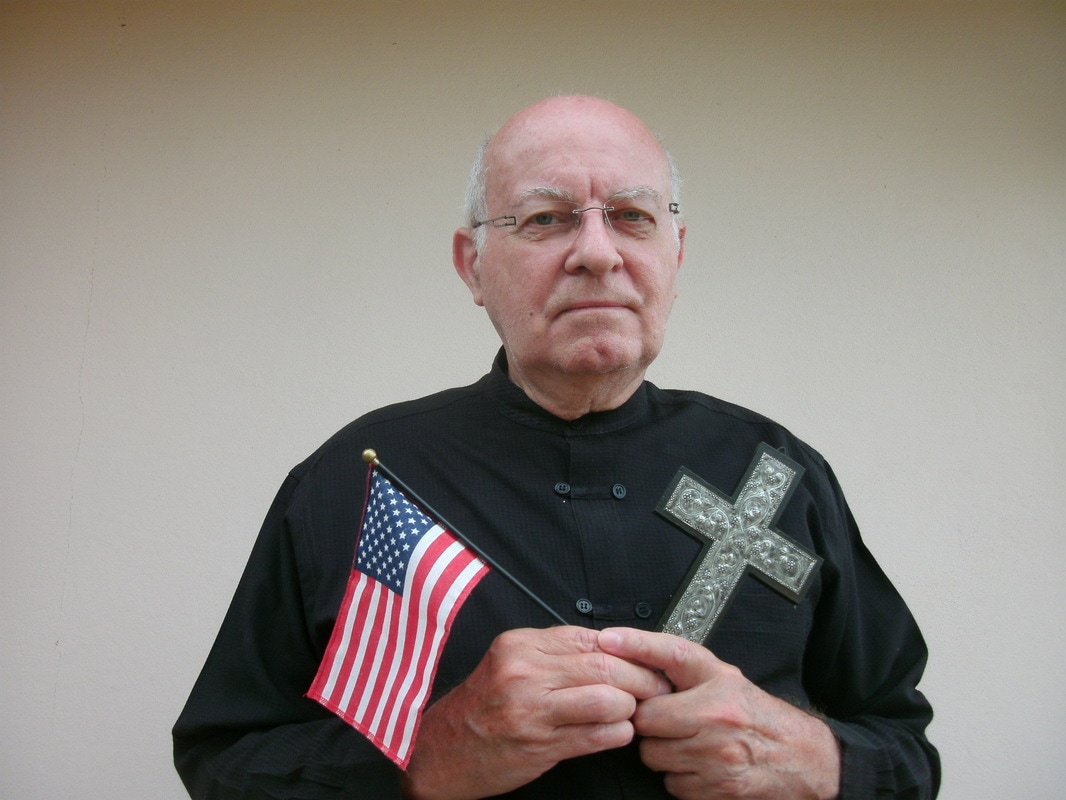|
There are four realms of discourse about faith in the United States that should be kept separate even though that is hard to do. These areas overlap, so activity may involve more than one domain. Social scientists study these practices as discrete issues, which tends to ignore simultaneous operations and blur conclusions. Theologians, religionists and students of comparative religion must be able to synthesize the whole picture, even the gestalt, which tends to become argumentative after a while. Meanwhile, most people are content to lump all their beliefs together.
The four realms are religion, civil religion, spirituality, and folk-faith. DEFINITIONS Religion in the USA is understood to be the purview of various traditions with their structures, traditions and rituals enclosed in boundaries of their own construction. Religions have narratives that are shared widely among all adherents to the religion, which connect people to the sacred. The purpose of a religion is to sustain and communicate a key, fundamental truth (or body of truths), the way to derive the benefits of knowing this truth, and the implications for a life modified to comport with that truth. The complex symbolisms in religions are to facilitate retention of the truth by initiates and to provide foci for communities of believers, and to help them bridge the chasm between the mundane and the holy. North America has been host to nearly all of the world religions as well as sub-divisions of them. Several indigenous religions emerged as well, e.g. the Mormons. It is accepted in America, following Christian hegemony, that one cannot be a member of more than one formal religion. Civil religion is a faith-based cluster of concepts that presume to account for the history and unique culture of the American people as a nation. This national narrative is not compiled into a fixed canon but is reiterated as legends and truth agreed to by consensus. American civil religion incorporates symbols (such as the flag, and the national anthem, to name but two), and patriotic shrines and landmarks where a “reverential” level of patriotism is mandated (as at the “Tomb of the Unknown Soldier”). These symbols and shrines may only vaguely refer to the national narrative. National observances tend to evolve into holidays of three types: those that support the fundamental principles of American civil religion (e.g. Memorial Day and Independence Day – the 4th of July, and Thanksgiving Day), those that contradict American civil religion (e.g. Martin Luther King’s birthday), and those that become irrelevant to American civil religion (e.g. Labor Day and the Washington Monument). In times of cultural threat civil religionists recruit formal religious leaders and transform organizations in the cause of patriotism to perform civic duties. Whenever civil religion is a dominant influence, separation of “church and state” is obscured. Spirituality has to do with how individuals integrate the experiences and components of life in order to live effectively and optimize a sense of meaningfulness and fulfillment. Spirituality is concerned with strategies for synthesizing insight, discovering peace, and maximizing life. Spiritual strategies usually involve training in mind control through physical deprivation or exertion, limited sensory input to deepen concentration or sensory overload to open the mind, and/or expanded knowledge and cognitive capacity leading to insight. American spirituality is eclectic and optional. It often incorporates physical exercise or some dietary regimen in the name of being holistic. Folk-faith in the USA includes a wide range of generally held beliefs and narratives about life and death, common sense, and the natural order. It is the character of folk-faith to hold these beliefs tentatively, while deriving assurance from them. Some of these beliefs are held in spite of official opposition or scorn (e.g. that suicide is a valid option rather than unbearable, interminable suffering), but other folk beliefs manage to acquire a measure of agreement (e.g. that when we die we will be reunited with those we loved, an assurance that will generally be reiterated by clergy at an American funeral). Folk beliefs are subject to waves of popularity. Much mischief results from failing to recognize how these realms of faith function. Some of the trouble is deliberate. Political powers benefit from manipulating public emotions about faith issues. It makes a difference that formal religions have a canon of scripture, but civil religion does not. That can be and has been exploited. Most of the confusion is inadvertent, although sometimes damaging. Now that personal spirituality is indistinguishable from formal religion, the fact that spiritual development is understood to be a personal choice has undermined traditional religion’s ability to arbitrate between persons’ inclinations and cultural values, for example. In the end, the muddle manages to destroy the very thing faith is supposed to provide, freedom to believe. Faith systems can coexist as long as they respect each other. But confusion and belief cannot coexist.
0 Comments
Leave a Reply. |
AuthorRev. Dr. Kenneth Dobson posts his weekly reflections on this blog. Archives
March 2024
Categories |
| Ken Dobson's Queer Ruminations from Thailand |
|

 RSS Feed
RSS Feed
